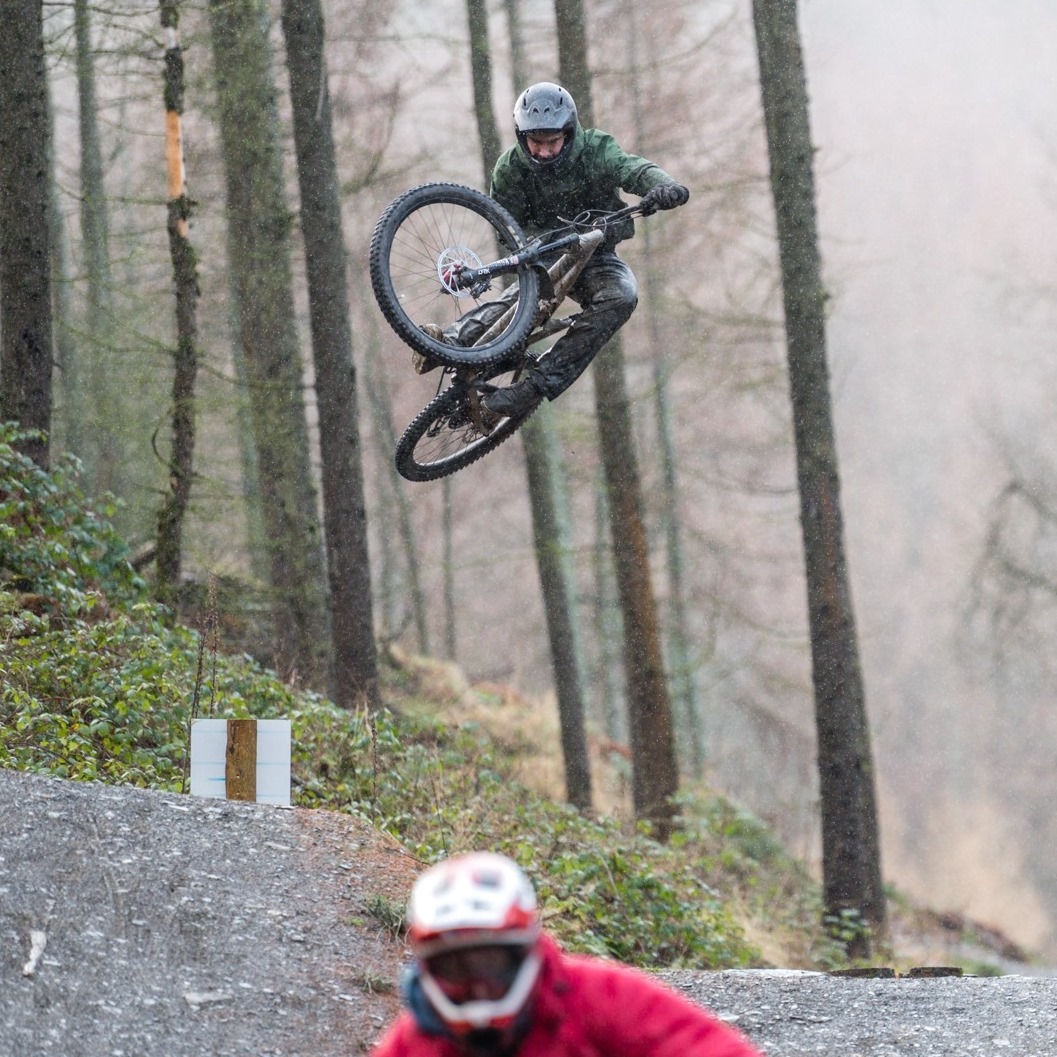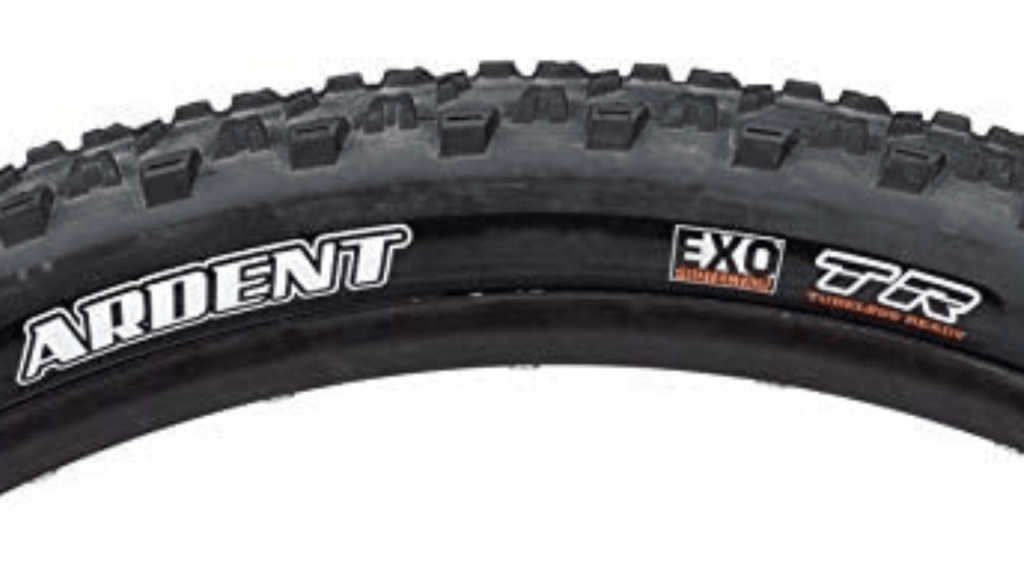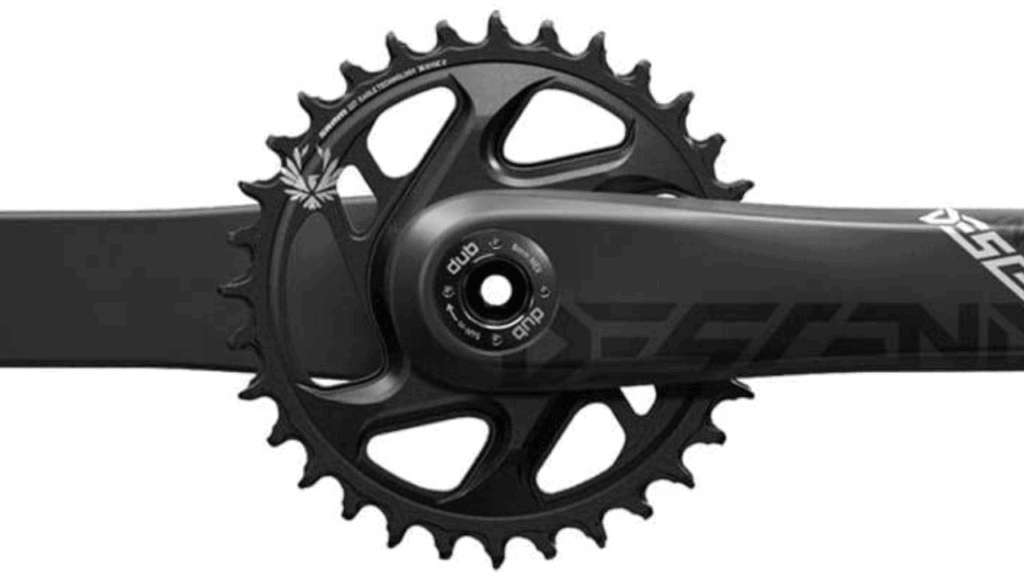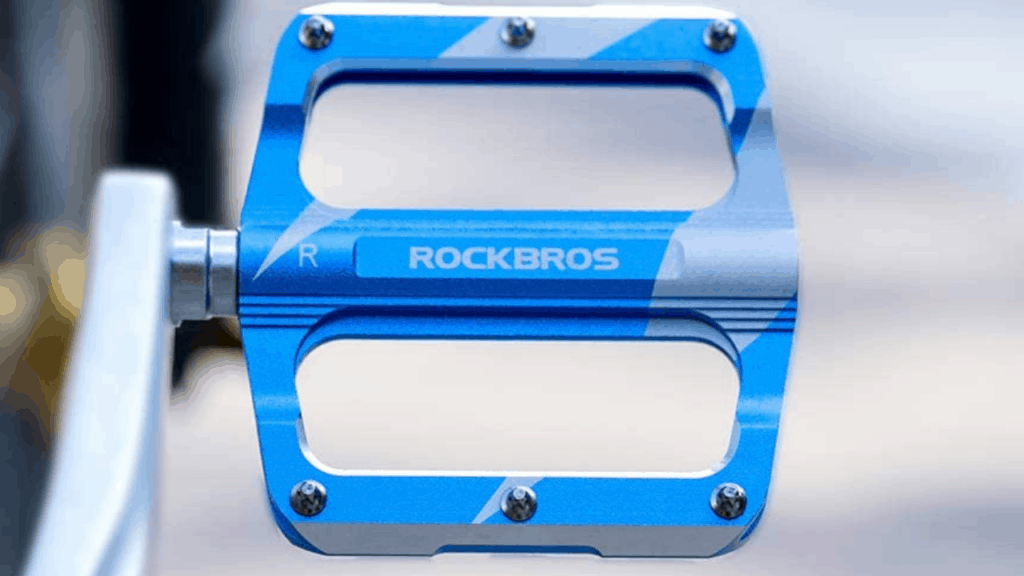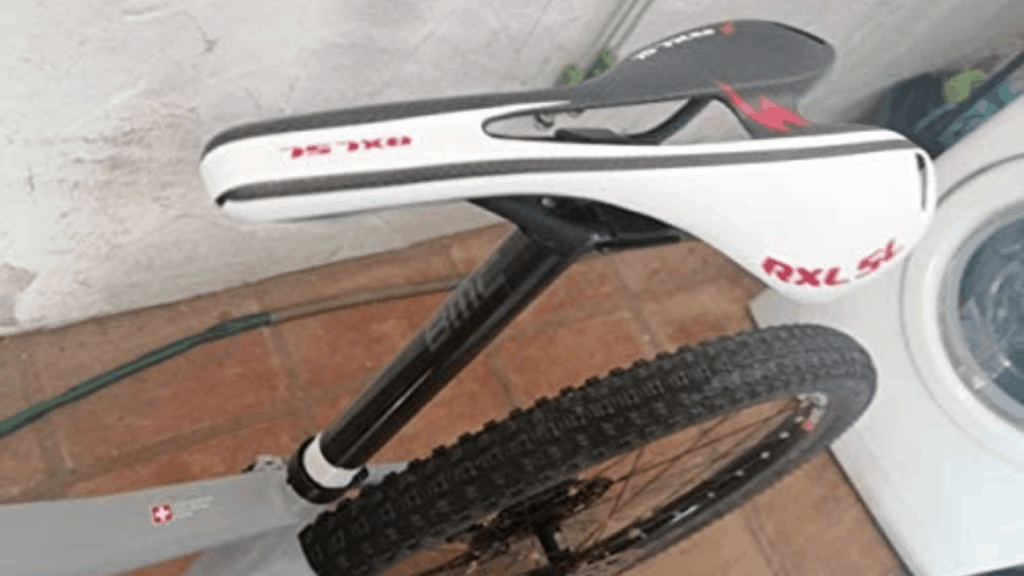How To Reduce Mountain Bike Weight?
/ Tips / How To Reduce Mountain Bike Weight?
Looking to cut your mountain bike weight down? It’s not uncommon for mountain bikers to complain about a heavy bike. After all, the stunts and maneuvering don’t sit well with a heavy bike.
But how do you cut the weight down on your mountain bike? One of the easiest ways to do so (and the cheapest) is to get tubeless tires. They’re safer than tubed tires and will cut down on both weight and maintenance costs.
After that, you can opt for carbon components. But we’ll talk about all this and more in this guide on making your MTB lighter.
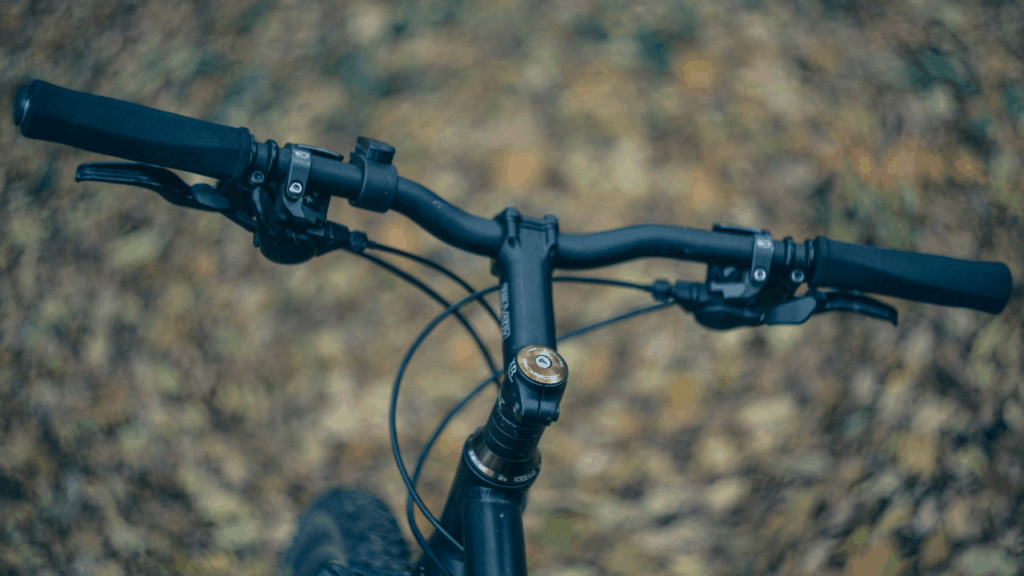
Why Should You Reduce Weight on Your MTB?
Before we begin talking about reducing mountain bike weight, let’s discuss the benefits of doing so.
It’s a well-known fact that weight hinders movement. The heavier the bike is, the more resistance it will put up when moving. On a regular bike, the slight resistance put up by the bike’s weight isn’t a big concern.
But for a mountain bike, weight is just another obstacle on the trail. A barrier that, unfortunately, the bike can’t conquer on its own.
Reducing the weight of the bike will result in a faster ride. And this is not just on straight paths. You’ll notice the difference when riding uphill and downhill too.
How do I Lower my Mountain Bike Weight?
So how do you make your mountain bike lighter? Here are a few tips
Go Tubeless
Going tubeless is a sure-fire way to make your MTB float in the clouds, by far one of the easiest ways to cut down on weight. Many tubeless tires are available for purchase online such as Maxxis’s Ardent Dual Compound Tubeless Tires.
Tubeless tires have a lot of benefits aside from being lighter in weight. They’re less prone to punctures, easier to repair, and are far safer on the road than tubed tires.
So how will going tubeless help cut down on weight? Well, there’s one essential component on a tubed tire that a tubeless tire is missing: the tube. While it doesn’t weigh a lot, the tube is just one of the many things adding weight to your MTB.
Lighter Tire Tubes
Afraid to go tubeless? No problem. Even if you stick with tubed tires, there are ways you can reduce their weight. You can swap out your stock tubes for lightweight tubes such as the Continental Supersonic Road Bike Tubes. These tubes can be as light as 50 to 60 grams and fit perfectly on your tires.
And the best part? They’re cheap. Come to think of it, lighter tire tubes are the most affordable ways to reduce the weight of your bike.
Try Carbon Rims
Perhaps no other part of the bike has more potential for losing bike weight than the rim. The rims are made from solid metal, and as such, can weigh the bike down a lot.
The best way to cut down on rim weight is to try carbon rims. While they may cost you a bit more than your regular rims, they will surely lighten up the bike.
It should be noted here, however, that you shouldn’t compromise on the thickness of the rims unless you’re able to. The thickness is essential for adequate tire seating. If you switch to rims that are too thin, you’ll be compromising on a lot more than just the bike’s weight. Try rims made for a specific size of tire, like the HULKWHEELS for 29ers.
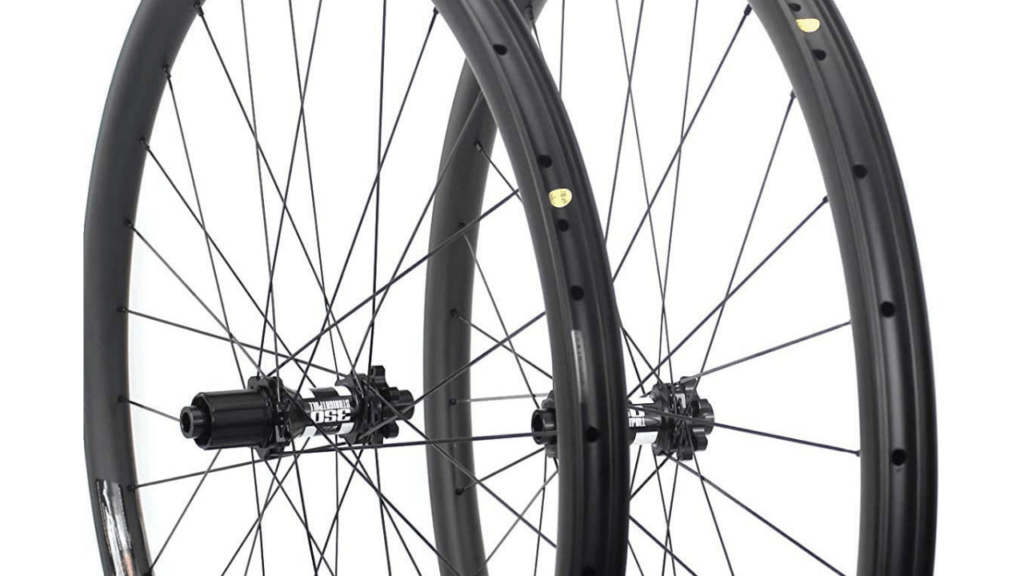
Carbon Handlebars
Much like the rims, you can also swap out the handlebars for carbon ones. Again, it won’t be cheap. But the result will be worth it, especially if you want to cut down weight on your bike.
But it’s not just the weight. Carbon handlebars are highly revered for their vibration damping qualities. This makes them comfortable to use on rocky terrains, perfect for an MTB. Plus, despite being lighter, they’re thicker and easier to grip.
Speaking of grips, you can step up the handlebar game by buying push-on grips such as the Ergon GE1 Evo Grips. They weigh less than the unnecessary hard rubber grips. And they dampen vibrations too.
Change the Fork
Most people don’t focus on the fork when trimming their bikes down. Much like with the handlebars, you can swap your fork out for a lighter one. It’s best to choose a fork of the same type as your previous fork. But you’re also free to experiment with different types of forks.
To be more specific, if you opt for the right fork, you can cut down up to 350 grams, which is a lot on the road. JIMAITEAM’s Full Carbon Fork is a good example of this, as it’s both lightweight and easy to install but you lose suspension.
But here’s the catch: lightweight carbon forks cost a lot more than carbon handlebars or tubes. So, you’ll be spending a lot of your budget here.
Drivetrain With 1x
A 1x drivetrain is a type of drivetrain with a single chainring and can be combined with as many gears as needed. Read as “one-by”, you’ll find these drivetrains in configurations such as 1×10, 1×11, etc., where the second number is the number of gears.
Chances are, your MTB already uses a 1x drivetrain. But if it doesn’t, you can cut down on the added weight of the other chainrings by removing them entirely.
If you want to go even lighter, you can remove the last chainring and go for a single-speed bike. It’s not recommended to do that, though, as your bike wouldn’t be a MTB if you do that.
Rest assured, a 1x drivetrain is the lowest you should go in terms of how many chainrings you have on your bike.
Crankset Upgrades
Much like the drivetrain, you can also swap out the crankset for a full carbon one. When done right, a carbon crankset upgrade will cut down up to 0.71 pounds or 322 grams.
A bit of background for you: the crankset is part of your bike that converts your pedaling into rotational motion for the wheels. It’s a collective name for the sprocket, the chainring, the gears, and the crank arms.
Instead of separately buying carbon variants of each of these components, it’ll save you a lot of time and money to buy a whole carbon crankset. The whole crankset can be purchased in a bundle like the Truvativ Unisex’s Crankset.
Pedal Alternatives
You probably didn’t see this one coming. Pedals are often the most overlooked components in mountain bikes, even among those who like to ride custom. But they’re the most crucial in function and weight.
Typical pedals will weigh between 200 and 400 grams. Carbon or titanium pedals are on the lower end of the weight spectrum, weighing about 200 to 300 grams. A good example would be the ROCKBROS Mountain Bike Pedals.
But never choose a pedal that feels too weak. Sellers might try to swindle you with ridiculously light pedals. And remember, the lighter the pedal, the less pedaling force it can handle.
Fit A Lighter Seat
Swapping out your MTB saddle for a lighter one is a significant upgrade to make your bike lighter. Think of it – the saddle has to hold your weight. So manufacturers spare no expense when creating the saddle as tough and weighty as possible.
But that doesn’t mean you can’t make any modifications. Nowadays, we have carbon saddles such as the RXL SL Carbon Bike Seat available for cheap. And the best part is that they don’t compromise on rigidity or comfort.
Seat Post
When trying to cut down on mountain bike weight, you probably didn’t think of seat posts. It’s quite surprising to know how many components can be bought in lighter carbon versions.
A significant obstacle in your way, however, is the price. Seat posts are quite expensive due to their relative strength and longevity. And a carbon seat post will cost even more.
But all things aside, it is possible to find a light seat post at a nominal price, such as the EC90 Full Carbon Fiber Bike Seat Post. Even if you don’t find a carbon one, upgrading from steel to aluminum will save you kilos.
Carry Less Equipment
While not the most practical solution, you’ll be surprised to know how much junk you’re carrying on you. Take a look inside your backpack and remove items that you no longer use.
But always be mindful of what you’re compromising on. It’s not recommended to bargain safety equipment, emergency gear, food, and water for a bike that weighs a few grams less.
How Much Weight Can You Cut Down on A Bike?
Now that you know how to reduce bike weight, the big question here: what’s the limit?
Well, how much weight you can cut down depends on what your stock bike is like. If it already has carbon components, then we won’t be including those. But assuming that your bike doesn’t have any carbon components, you can expect to reduce up to 1.3 kilos (2.87 lbs.) by going carbon.
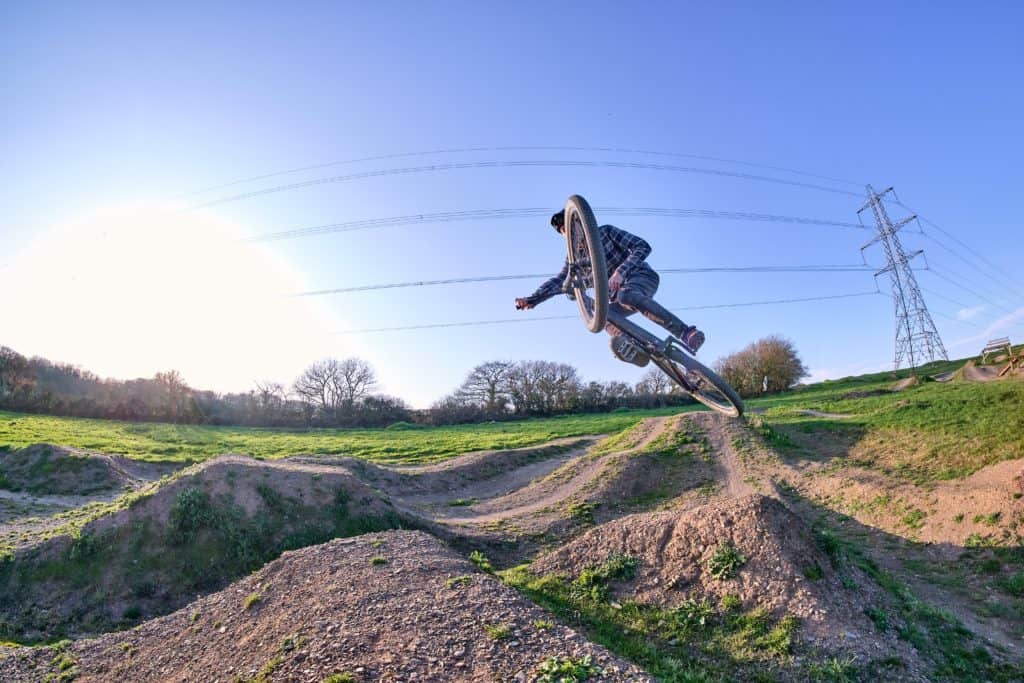
How Much Does Reducing Weight on A MTB Cost?
So, we got the total weight savings out of the way. But what about the cost? Carbon components don’t come cheap. But you can indeed find them at a good bargain.
How much it costs entirely depends on where you buy the components from, whether they’re new, and installation labor. Based on all that, a complete carbon build will cost you about $500-$1500 Like we mentioned, it’s not cheap. But the outcome will be a bike that can soar through any terrain.
Conclusion
Weight is another obstacle in the way of your MTB. It’s quite astonishing to see that, although you’re reducing weight gram by gram, the overall weight saving can be as high as a kilo!
Perhaps one of the easiest ways to cut down on mountain bike weight is to use tubeless tires. They’re far more efficient than tubed tires anyway. But even if you can’t do that, you can always opt for a carbon build. A full carbon build is quite pricey. But swapping a few components here and there is a good start.
Lastly, whatever you do, remember to enjoy the ride and stay within the legal speed limit!
Below is a Pinterest friendly photo… so you can pin it to your Mountain Bike Board!
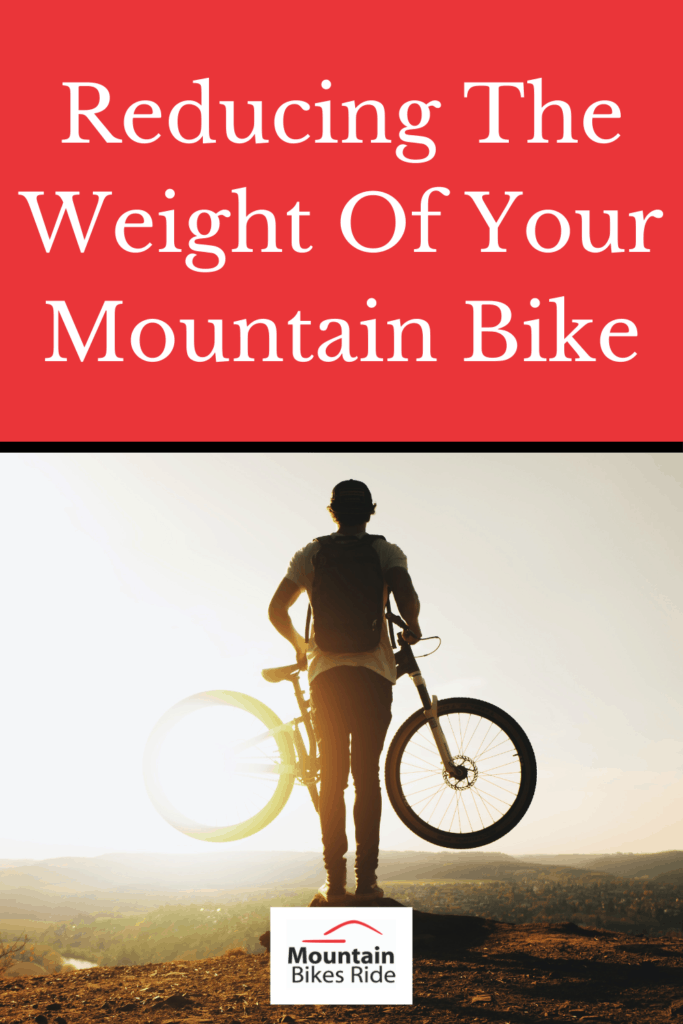
Related Articles
What Does Travel Mean On A Mountain Bike?
Oli L • March 22, 2022
When you start mountain biking you will hear the term "travel" quite a bit. But what the heck is travel and what does it have to do with mountain biking? "Hey, dude, how much travel do you have on your front fork". This is something you will hear often and it's referring to how much suspension you have on your bike. Travel on a mountain bike is the distance you...
What Is A Mountain Bike Dropout?
Oli L • March 1, 2022
The Mountain bike dropout is not a topic of most conversations when it comes to mountain biking. These components are located on the fork-end and features a section in the frame or the fork, where the wheel can quickly be loosened and removed in the need of a wheel change. In more technical terms, it refers to a slot located in the rear axle of the mountain bike, that allows...
How to Manual on a Mountain Bike
Oli L • November 9, 2021
When you're cruising on a mountain bike or pacing through a trail, you face different problems. One such problem is the obstacles that you face while conquering trails. To overcome these obstacles, there's a popular skill that is known as a manual. With a manual, you can pass over these obstacles in style and comfort. And like every skill, this mountain biking skill requires practice. Because without practice, even if...
How To Clean Disc Brakes on A Mountain Bike
Oli L • October 21, 2021
Want to learn how to clean disc brakes on a mountain bike? Here you’ll find out what you can use to clean your mountain bike disc brakes, how to detach the disc brakes and their entire cleaning in your garage. Mountain Bike Disc Brake Cleaning Overview You can clean your mountain bike disc brakes after removing your wheels, wiping those brakes with brake cleaner and a clean rag. You can...
Hydraulic Disc Brakes Vs. Mechanical Disc Brakes
Oli L • September 9, 2021
One of the most common topics in the biking world is "hydraulic disc brakes vs. mechanical disc brakes." And so it should be because most of the bikes either come with hydraulic disc brakes or mechanical ones. Hydraulic disc brakes are the dominant of the two. These brakes are complex but reliable. However, mechanical brakes are under-performing but straightforward than their counterparts. So, which one will be better for your...
Latest Articles
Popular Articles
Product Of The Week
Monday 29th April
